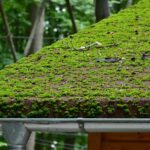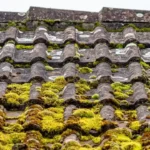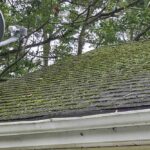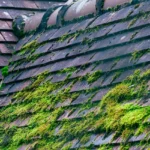Maintaining a healthy home starts from the top down, quite literally. One crucial aspect that homeowners often overlook is the roof drainage system. Effective drainage is vital to preventing water damage, which can lead to costly repairs and even structural damage. This article will provide you with essential tips for inspecting roof drainage systems, ensuring your home remains safe and dry.

Understanding Roof Drainage Systems
Before diving into the tips, it’s important to understand what a roof drainage system entails. These systems are designed to direct water off the roof and away from your home’s foundation. They typically include components such as gutters, downspouts, and drains. A well-maintained system helps prevent leaks, mold growth, and even foundation issues.
The Importance of Regular Inspections
Regular inspections of your roof drainage system can prevent minor issues from becoming major problems. By identifying and addressing issues early, you can save money and extend the lifespan of your roof. Inspections should be conducted at least twice a year, ideally in the fall and spring.
Inspecting Gutters and Downspouts
Your gutters and downspouts play a critical role in directing water away from your home. During your inspection, check for clogs, rust, or damage. Remove any debris such as leaves or twigs that may have accumulated. Ensure that the gutters are securely attached and that the downspouts direct water at least three feet away from the foundation.
Checking Roof Drains
If your home has a flat roof, it likely has roof drains instead of gutters. Inspect these drains for blockages and ensure they are functioning properly. Remove any debris and test the drains by pouring water into them to see if it flows freely.
Signs of Drainage Problems
Knowing the signs of drainage issues can help you take action before damage occurs. Look for water stains on your ceilings or walls, which may indicate a leak. Check for pooling water around your home’s foundation, as this can signal improper drainage.
Addressing Common Issues
If you notice any problems during your inspection, address them promptly. Small issues, like a loose gutter or minor blockage, can often be fixed with simple DIY solutions. However, more significant problems, such as sagging gutters or persistent leaks, may require professional assistance.
Hiring a Professional
While DIY inspections are beneficial, hiring a professional for an annual inspection can provide peace of mind. Professionals have the expertise to identify subtle issues that may go unnoticed by the untrained eye. They can also offer solutions and perform necessary repairs to keep your roof drainage system functioning optimally.
Preventive Maintenance Tips
In addition to regular inspections, there are preventive measures you can take to maintain your roof drainage system. Clean your gutters regularly, especially after a storm. Trim nearby trees to prevent leaves and branches from clogging your system. Consider installing gutter guards to reduce the frequency of cleaning required.
Seasonal Considerations
Different seasons bring different challenges for your roof drainage system. In the fall, falling leaves can quickly clog gutters. In winter, ice dams can form, preventing proper drainage. Be vigilant during these times and take appropriate action to prevent issues.
Conclusion
By following these tips for inspecting roof drainage systems, homeowners can protect their investment and ensure their home remains safe and dry. Regular inspections, prompt repairs, and preventive maintenance are key to a healthy roof drainage system. For more detailed insights on maintaining roof drainage, visit Maryland Roofers. To learn more about managing roof drainage efficiently, you can also check out this guide on our website.

FAQ Section
How often should I inspect my roof drainage system?
It’s recommended to inspect your roof drainage system at least twice a year, ideally in the fall and spring, to ensure it’s functioning properly.
What are the signs of a clogged gutter?
Signs of a clogged gutter include water overflowing from the gutters, sagging gutters, and water pooling around the foundation of your home.
Can I inspect my roof drainage system myself?
Yes, you can perform a basic inspection yourself. However, for a thorough inspection, it’s advisable to hire a professional who can identify and address any potential issues.
This article contains affiliate links. We may earn a commission at no extra cost to you.








